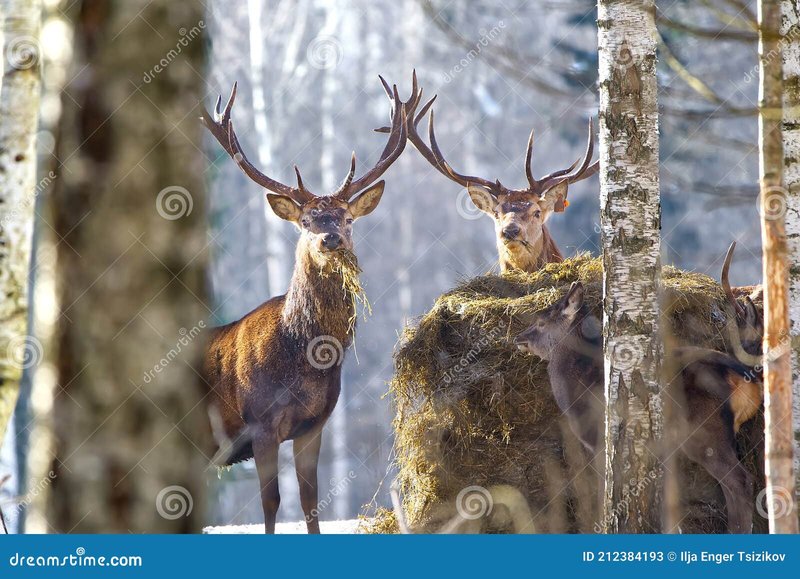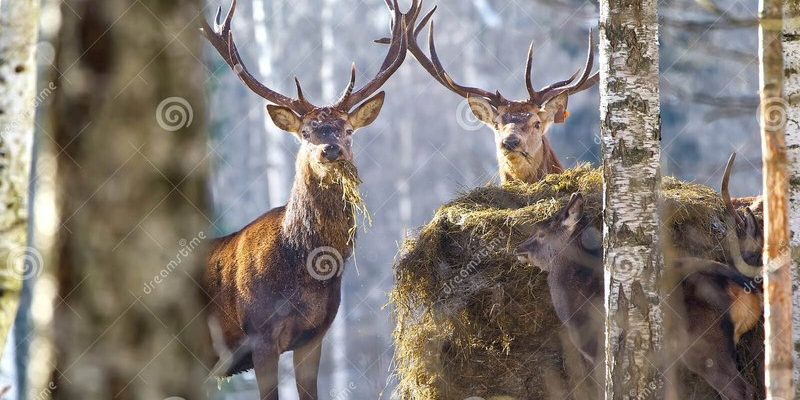
Understanding Red Deer Parenting
Red deer, or Cervus elaphus, typically give birth to their young during the late spring to early summer months. This timing is crucial. By aligning their birthing season with warmer weather and abundant food supply, the chances of survival for the fawns increase significantly. Think of it like planting seeds when the conditions are just right—there’s a better chance for those seeds to grow into strong plants.
When a doe—female red deer—goes into labor, she seeks a secluded spot away from the herd. This instinct helps protect her vulnerable fawn from potential predators. Honestly, it’s like setting up a private space for a new baby. The doe will usually give birth to one fawn, though twins can occur, particularly if the doe is older and healthier.
The First Days of Life
Once the fawn is born, the first few days are critical. Immediately after birth, the fawn is able to stand and walk, a remarkable feat that’s vital for survival. In the wild, being mobile means being able to escape danger. The mother helps her fawn learn to navigate their environment and encourages it to move around to strengthen its legs.
For the first few weeks, the doe leaves her fawn hidden in tall grass or bushes while she forages for food. You might be wondering why she doesn’t keep the fawn by her side at all times. It’s a survival strategy. Staying hidden reduces the risk of attracting predators. This can be a tense time for the fawn, as instinct tells it to remain still and quiet, even when it feels lonely.
Feeding and Nurturing
Feeding is a crucial aspect of raising fawns. Red deer milk is rich and nutritious, providing the young ones with everything they need to grow strong. The mother nurses her fawn multiple times a day, usually in the early morning or late evening when it’s safer from predators.
As the fawn grows, it starts to nibble on grasses and plants. It’s like moving from a diet of milk to family dinners! The mother gently encourages this transition, teaching her fawn what to eat and what to avoid. This learning process is essential. Red deer are herbivores, and knowing which plants are safe is key to their survival.
Protecting the Young
Protection is a significant part of the doe’s job. While red deer are generally social animals and live in herds, a mother will fiercely defend her fawn. If she senses danger—like a predator nearby—she might snort loudly or stomp her feet to warn other deer. This alertness is vital in keeping the fawn safe.
In the early weeks, the fawn relies heavily on its mother and the herd for protection. The doe will even stay close to her fawn if she senses a threat, often placing herself between her young and any potential danger. Imagine the fierce love of a mother bear—it’s similar for red deer, except they’re more subtle about their strength.
Learning Life Skills
As the fawn matures, it begins to learn essential life skills. The mother teaches her young how to forage and recognize safe spaces, making it a gradual learning process. These lessons help the fawn build confidence and independence. The mother also teaches social skills through interaction with the herd, which is important for the fawn’s future relationships with other deer.
Here’s the thing: just like human children, fawns learn through play. They tumble and chase each other, which helps them develop strength and agility. This playful behavior is not just fun; it’s building the muscles and skills they need for survival.
Weaning and Independence
Around six months of age, the fawn is gradually weaned off its mother’s milk. This is a bittersweet transition. The mother will start to limit nursing sessions, encouraging her fawn to rely more on solid food. It’s like when kids start to eat more at the dinner table; they become less dependent on baby food.
During this time, the fawn often stays close to its mother for safety and reassurance. They might still engage in playful behavior, but the focus begins to shift towards exploring more independently. After about a year, the fawn will typically leave its mother to join a new herd or find its place in the world.
The Role of the Herd
The herd plays a vital role in raising young red deer. It’s not just about the mother and fawn; the entire group provides protection and social interaction. Herds often consist of related females and their offspring, creating a community dynamic that’s beneficial for everyone involved.
Within the herd, younger deer learn from older ones, absorbing knowledge about their environment. It’s like being in a large family, where everyone contributes to the upbringing of the younger generation. The safety in numbers offers additional layers of protection, making it harder for predators to pick off an individual deer.
The Challenges of Raising Fawns
Raising a fawn in the wild isn’t without its challenges. While the doe does her best to protect her young, threats like predators, harsh weather, and food scarcity can complicate things. Natural predators like wolves and bears pose a real danger, and even the hidden fawns are not entirely safe.
Additionally, as the seasons change, food availability can fluctuate. This can impact the mother’s ability to produce nourishing milk as well as provide adequate food for her growing fawn. You might think of it like balancing your budget—sometimes, there just isn’t enough to go around.
In conclusion, the way red deer raise their young is a beautiful testament to the resilience and instinctual wisdom of nature. From the tender moments of nursing to the tough lessons of survival, each phase of a fawn’s life is a carefully orchestrated dance of love and protection. Understanding this dynamic not only enhances our appreciation of red deer but also reminds us of the importance of nurturing the next generation. So next time you hike through a forest or enjoy nature, reflect on the hidden stories of wildlife parenting unfolding just out of sight.

